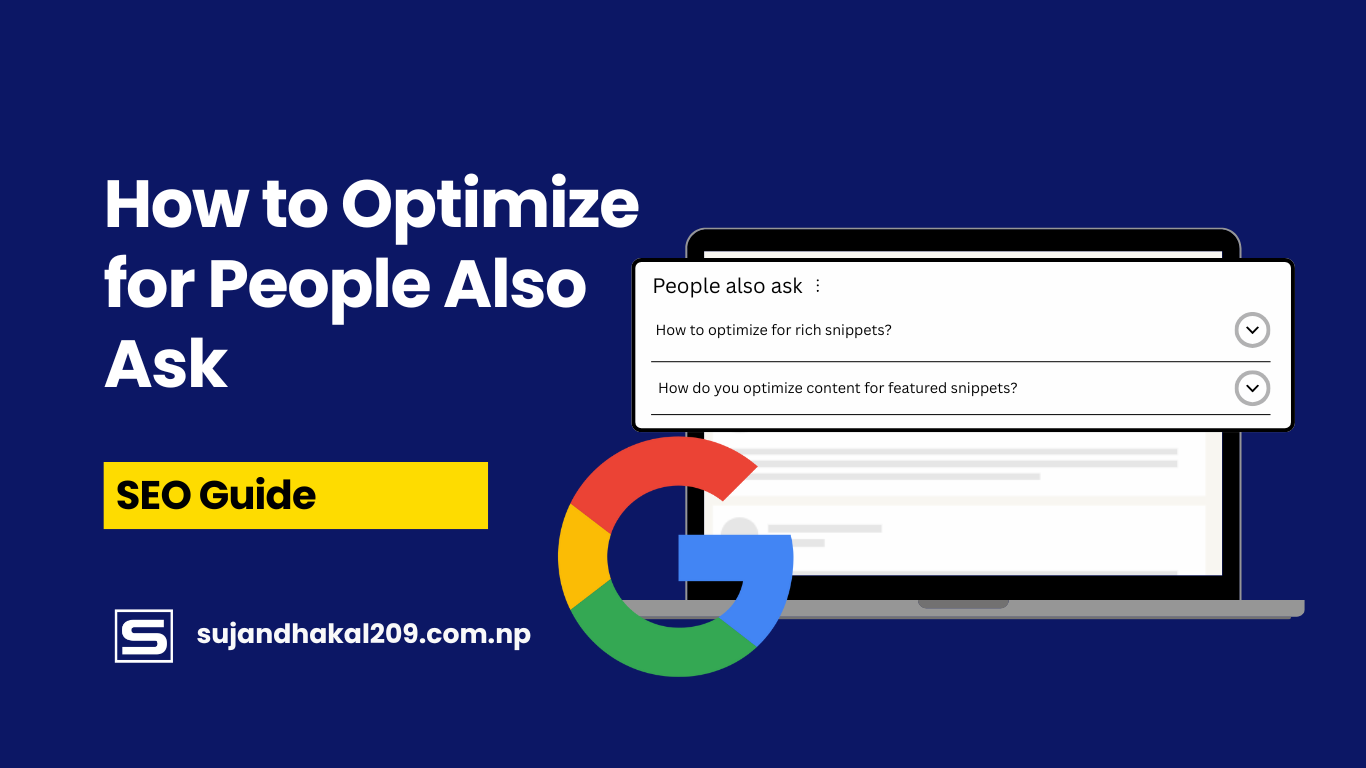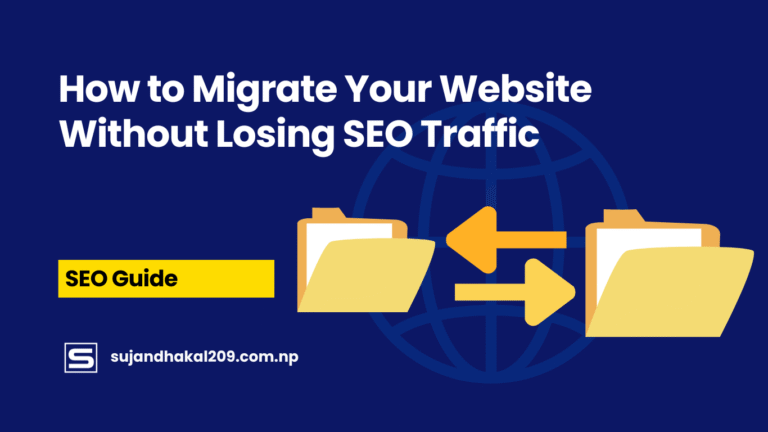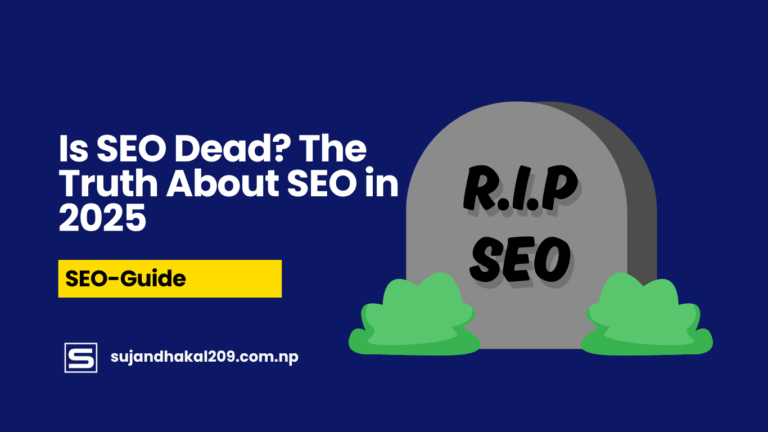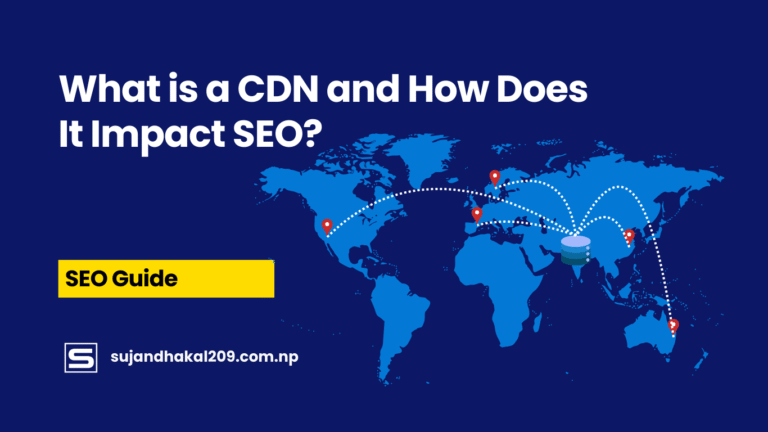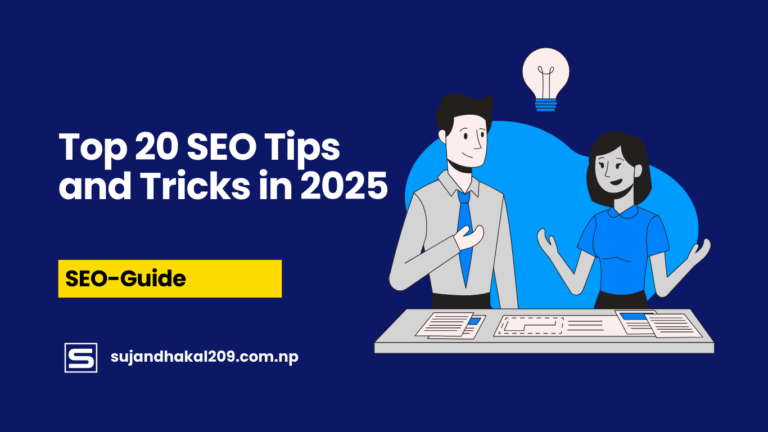When you’re trying to rank on Google, everyone talks about “featured snippets” and “position zero,” but there’s another powerful real estate on the SERP that often gets overlooked — the “People Also Ask” (PAA) box. This dynamic and ever-growing section holds massive potential for driving organic traffic, boosting credibility, and putting your brand right in front of your target audience. In this in-depth guide, we’re diving deep into how to optimize your content to appear in the PAA boxes, step by step.
Understanding the “People Also Ask” (PAA) Feature
What Is Google’s PAA Box?
If you’ve ever Googled a question and seen a dropdown section that expands into similar questions, you’ve encountered the PAA box. This interactive element typically shows up within the first few search results and offers quick, concise answers to related queries. Each question expands to reveal a short snippet of text pulled from a web page, along with a clickable link to the source.
Unlike featured snippets which show a single answer, PAA boxes can expand infinitely with more related questions as users keep clicking. This makes them a huge opportunity — each new click is a potential new path to your content. Google’s algorithm pulls this information based on relevance, clarity, and how well the page answers the question.
What’s fascinating is that the PAA box doesn’t just show answers from the highest-ranking sites. You don’t have to be in the top 3 organic positions to appear in a PAA result. That means it’s a great way for newer or smaller sites to get visibility on the SERP without needing to dominate the first page.
Why Does PAA Matter for SEO?
Let’s put it this way — PAA is basically Google telling you what people are asking. That’s a goldmine for SEOs and content marketers. These are real questions from real users, and when you tailor your content to answer them directly, you tap into a demand that’s already proven.
From an SEO perspective, PAA gives you:
- Insight into user intent: You can build content that actually answers what people want to know.
- Extra SERP visibility: Even if your page ranks at position 9, if your content is used in a PAA answer, you’re suddenly front and center.
- Better engagement: Answering these questions in a clear, concise way can keep users on your site longer and reduce bounce rates.
So, when you’re optimizing for PAA, you’re not just targeting another search feature — you’re improving your overall SEO, increasing engagement, and aligning with user behavior.
Benefits of Ranking in the PAA Section
Boosts Organic Visibility
One of the most compelling benefits of getting into a PAA box is the immediate bump in visibility. Think about it: even if your website isn’t ranking in the top 3 organic results, being featured in PAA puts your brand right in front of users. Sometimes, even above the top organic results!
You’re effectively leapfrogging higher-ranking pages. When a user expands a question and sees your content providing the answer, you’re not just another result — you’re the chosen one. That kind of positioning builds trust and recognition fast.
Plus, as users interact with more PAA questions, they uncover new queries — which could also feature your content if you’ve optimized well. It creates a domino effect of opportunities.
Increases Credibility and Trust
If Google is choosing your content to answer a frequently asked question, it’s giving you an unspoken stamp of approval. For users, that implies trustworthiness and authority. Whether you’re a blog, a local business, or an eCommerce brand, showing up in PAA can significantly boost how people perceive your brand.
In a world where attention spans are short and skepticism is high, even a few seconds of credibility can be the difference between a bounce and a conversion.
Enhances Click-Through Rates (CTR)
Optimizing for PAA not only puts you in front of more people but also entices them to click through to your site. The question-answer format naturally triggers curiosity. If your snippet is well-written — informative but slightly incomplete — users will be more inclined to click the link to learn more.
This is especially true if your site provides added value like visuals, detailed guides, or downloadable resources. Higher CTR means better engagement, which sends positive signals to Google and can boost your overall rankings.
How Google Selects Content for PAA Boxes
NLP and Semantic Relevance
Google’s algorithm is heavily driven by Natural Language Processing (NLP). It understands not just keywords but the intent and context behind a query. That means your content doesn’t just need to include the right words — it needs to answer the user’s question in a way that feels natural and informative.
This is why it’s essential to match the language of your content with the way users are asking questions. Using question-based headings and conversational language helps signal to Google that your page is relevant for those questions.
Structured and Concise Answers
Length matters — and not in the way you might think. Google prefers answers that are between 40 to 60 words long for PAA snippets. These are short, scannable, and to the point. It doesn’t want a wall of text; it wants clarity.
So, break down your answers into quick, clear, and focused responses. If you need to explain something in detail, use the short version up top and dive deeper later on the page. This structure satisfies both search engine and user.
Source Authority and Topical Relevance
Your site’s overall authority and the relevance of your page play a role too. Google is more likely to select content from sites that are consistent in covering specific topics. That’s why niche blogs often do well in PAA — they’re seen as experts in that space.
Make sure your page covers the topic thoroughly. Use internal linking to related posts, cite reputable sources, and keep your site updated. All of these factors help build the authority that Google looks for.
Step-by-Step Strategy to Optimize for PAA
Start With Keyword Research Focused on Questions
The foundation of any good PAA strategy is understanding what your audience is asking. Instead of focusing solely on traditional keywords, shift your attention to question-based queries. These are the kinds of searches that most often trigger PAA boxes.
Start by brainstorming common questions in your niche — think “how,” “why,” “what,” “when,” and “can” queries. Then, plug those into keyword tools like:
- AnswerThePublic
- SEMrush’s Keyword Magic Tool
- Ubersuggest
- Google’s “People Also Ask” itself
The idea is to uncover long-tail question keywords with decent search volume and low to medium competition. You’ll often discover hidden gems — questions your competitors haven’t answered properly.
For example, if your site is about plant care, a PAA-worthy query could be, “Why are my indoor plants turning yellow?” That’s the kind of question you can structure a blog post or FAQ around, giving you a strong shot at landing in the PAA box.
Use Question-Based Subheadings
Once you’ve identified the right questions, it’s time to weave them into your content using H2 or H3 subheadings. Why? Because Google looks for structure. When your subheadings directly match or closely resemble user search queries, it increases the chance your content will be selected for PAA.
For example, if your keyword is “How to prune a bonsai tree,” you should have a section titled “How do you prune a bonsai tree?” or “What’s the correct way to prune a bonsai?” Then answer it in 1–2 concise paragraphs.
A few formatting tips:
- Use only one question per subheading.
- Don’t over-stuff keywords — make it sound natural.
- Use synonyms and variations to cover a wider range of PAA triggers.
Think of each subheading as a standalone opportunity to be pulled into the PAA box. The more question-based sections you include, the higher your chances of getting picked up.
Answer Clearly and Concisely in Paragraphs or Lists
Let’s talk formatting. Once you’ve added a question subheading, get straight to the point in your answer. Google prefers answers that are 40–60 words — think two to three sentences max.
Your goal is to be the best short-form explainer on the web for that specific question. Here’s how to do it:
- Start with a clear, direct answer. Don’t bury it in fluff.
- Expand slightly with helpful context or examples.
- Use bullets or numbered lists if the answer requires steps.
- Avoid filler words and passive voice.
For example:
Q: How do you reset a Wi-Fi router?
A: To reset a Wi-Fi router, press and hold the reset button on the back of the device for about 10 seconds. Wait for the lights to flash, which indicates the router is resetting to factory settings.
That answer is PAA-ready. Clean, informative, and easy to digest.
Utilize Structured Data and Schema Markup
If you’re not using structured data, you’re leaving ranking potential on the table. Schema markup helps Google understand your content better, especially when it comes to Q&A or FAQ formats — both highly relevant to PAA.
Here are the best schema types to use for PAA:
- FAQPage schema – Great for targeting multiple PAA questions on one page.
- QAPage schema – Useful for forums and community answers.
- HowTo schema – Ideal for instructional content.
- Article and BlogPosting schema – Improves overall page relevance and indexing.
You can add structured data manually or use plugins like Yoast SEO, Rank Math, or Schema Pro for WordPress. Just make sure your markup is clean and tested through Google’s Rich Results Test tool.
While schema markup doesn’t guarantee inclusion in the PAA box, it definitely boosts your chances by making it easier for Google’s crawler to extract the right information.
Monitor Competitor PAA Boxes
Spying on your competitors isn’t just smart — it’s essential. If your rivals are consistently showing up in PAA, that means they’ve done something right. Your job is to figure out what and do it better.
Here’s how to do it:
- Search your target questions on Google.
- Note who appears in the PAA boxes.
- Click through to their pages and analyze:
- Content structure
- Answer length and style
- Use of visuals or lists
- Internal linking
- Page load speed
Once you’ve broken down their strategy, look for opportunities to improve upon it. Can you provide a clearer answer? A more detailed guide? A faster page load time? Every edge counts.
Also, use tools like Ahrefs, SEMrush, or SERPstat to track which PAA results your competitors are dominating and where you might have openings.
Tools and Resources for PAA Optimization
Answer the Public
One of the best brainstorming tools around, Answer the Public gives you a visual map of question-based keywords. Simply type in a root keyword, and it spits out a ton of queries grouped by categories like “how,” “what,” “where,” and “why.”
Use this tool to:
- Identify low-hanging PAA questions
- Build outlines for FAQ content
- Discover content gaps your competitors missed
The free version is solid, but the pro version gives more daily searches and insights.
AlsoAsked.com
This is a PAA goldmine. AlsoAsked scrapes actual PAA data from Google and shows how questions are related to one another — almost like a flowchart of search intent.
For example, searching “how to lose weight” might give you follow-up questions like:
- How long does it take to see results?
- What foods should I avoid?
- Can I lose weight without exercise?
By answering these second- and third-tier questions, you position your content for multiple PAA triggers in one go. It’s like mapping Google’s brain.
SEMrush and Ahrefs
Both these powerhouse SEO tools allow you to:
- Track keyword questions
- Analyze competitor PAA rankings
- Find missed opportunities
- Monitor your own SERP performance
Use filters to isolate question-based keywords and see which ones trigger PAA results. Then build targeted content around those.
Ahrefs even has a “Questions” feature under Keyword Explorer that pulls hundreds of real-world question queries for any topic.
Google Search Console Insights
Your own traffic data is also valuable. Google Search Console can show:
- Which queries are driving traffic
- What pages are earning impressions for PAA-like questions
- How users are engaging with your content
Look for patterns — do certain types of questions perform better? Are some queries triggering impressions but not clicks? Use this info to refine your content strategy.
Content Format Best Practices for PAA Inclusion
Use FAQs to Target Questions
If you’re not using FAQs on your web pages, you’re missing out on one of the easiest ways to optimize for the People Also Ask box. Why? Because FAQ sections naturally mimic the structure Google loves: direct questions followed by clean, concise answers.
Here’s how to do it effectively:
- Add an FAQ section at the end of your blog posts, landing pages, or even product pages.
- Use real questions from keyword tools or customer inquiries.
- Format each Q&A using proper heading tags (like H3 for the question, paragraph text for the answer).
- Keep answers between 40–60 words where possible — ideal for snippet inclusion.
- Use FAQPage schema markup to boost discoverability.
For example:
Q: What is the best time to plant tomatoes?
A: The best time to plant tomatoes is in the spring after the last frost has passed. Tomatoes need warm soil and full sun for optimal growth.
This not only satisfies user curiosity but also sends strong signals to Google that your content is well-structured and PAA-ready.
Optimize with Bullets, Lists, and Tables
Google loves structured data — and we don’t just mean schema. Visually structured content like bullet points, numbered lists, and tables are often favored in PAA results, especially for queries that involve steps, comparisons, or summaries.
Here’s when to use what:
- Bullet points: Use for quick lists, pros and cons, or features.
- Numbered lists: Best for steps in a process or ranking items.
- Tables: Great for comparing prices, features, sizes, or timelines.
Example of a list answer:
Q: What are the steps to clean a coffee maker?
A:
- Empty the carafe and discard any used grounds.
- Fill the reservoir with equal parts vinegar and water.
- Run a brew cycle halfway, then pause and let sit for 30 minutes.
- Resume and complete the cycle.
- Run 2–3 cycles with clean water.
Not only does this format look great on the page, but it’s ideal for Google to extract and display in the PAA box.
Prioritize Mobile and Core Web Vitals
Here’s something many forget: PAA answers are shown to mobile users first. If your site isn’t optimized for mobile, your chances of appearing in a PAA box go down significantly — even if your content is on point.
You need to:
- Ensure mobile responsiveness with clean, readable fonts and layouts.
- Improve page speed (Google’s ideal is under 2.5 seconds).
- Optimize Core Web Vitals, especially Largest Contentful Paint (LCP), First Input Delay (FID), and Cumulative Layout Shift (CLS).
Use tools like PageSpeed Insights and Lighthouse to audit your performance. The faster and more stable your site, the more Google trusts it as a reliable source for quick answers.
Bottom line? Great content alone isn’t enough — you need a technically sound site to earn that PAA placement.
Common Mistakes to Avoid in PAA Optimization
Overusing Keywords
Keyword stuffing is an old SEO trick that doesn’t work anymore — especially not in the context of PAA. Google is all about natural language, and overly optimized content often sounds robotic, which turns off users and the algorithm alike.
Avoid:
- Repeating the question or keyword in every sentence.
- Using exact-match phrases unnaturally.
- Forcing keywords into places they don’t belong.
Instead, focus on semantic SEO — using related phrases and natural variations of your keywords. Tools like LSIGraph and Surfer SEO can help with this.
Let your content breathe. If it sounds like something you’d say in a conversation, you’re on the right track.
Ignoring User Intent
Not all questions are created equal. Some users are looking for a quick answer, while others want a detailed how-to. If your content doesn’t match the search intent behind a question, it’s unlikely to make it into the PAA box.
There are typically four types of intent:
- Informational – “What is ketosis?”
- Navigational – “Best CRM software for small business”
- Transactional – “Buy organic dog food online”
- Comparative – “iPhone 13 vs Samsung Galaxy S21”
Match your answer to the intent. Don’t give a sales pitch when someone just wants a definition. Be helpful first — conversions will follow naturally.
Writing Vague or Lengthy Answers
PAA is not the place for long-winded storytelling. While detailed blog content is great for your overall SEO, your answers to PAA-style questions need to be tight and focused.
Bad answer:
“Tomatoes are a warm-weather crop that originated in South America and are now grown worldwide. If you want to grow them, you’ll need to understand…”
Good answer:
“Plant tomatoes in spring after the last frost when soil temperatures reach 60°F. They need 6–8 hours of sunlight daily.”
Keep the detailed explanations for later in the article. Lead with the answer, then elaborate if needed. That format works best for both users and bots.
How to Track PAA Rankings and Performance
Using SERP Tracking Tools
To know if your efforts are paying off, you need to track your presence in the PAA boxes. Tools like SEMrush, Ahrefs, and Rank Ranger can monitor your PAA visibility over time.
Here’s what to look for:
- Which of your pages are appearing in PAA results.
- What questions you’re ranking for.
- How often your content is triggered in PAA queries.
- PAA volatility (Google refreshes these often!).
Set alerts or scheduled reports to keep an eye on this metric — it’s often overlooked, but incredibly valuable for fine-tuning your content strategy.
Identifying Win/Loss for Featured Snippets
Featured Snippets and PAA boxes often pull from the same content pool. That means tracking your snippet performance can give you insight into PAA opportunities too.
If you’re ranking in Featured Snippets but not PAA, reformat some of that same content using question-based headings and see if Google starts to include it in PAA as well.
Remember: if your content is already structured and informative enough to win snippets, you’re this close to hitting PAA too — just tweak the formatting and question alignment.
Setting Up Alerts for Question Keywords
You can also use Google Alerts and tools like BuzzSumo to get notified when:
- New questions trend in your industry.
- Competitors publish content around key questions.
- Google starts surfacing different questions in PAA boxes.
This helps you stay ahead of the curve and adjust your content before the competition catches up.
Real-World Examples of PAA Optimization Success
Case Study: A Blog That Quadrupled Traffic
Let’s look at a real-world example of how optimizing for PAA can skyrocket organic traffic. A niche blog in the personal finance space, let’s call it MoneyMentor, noticed that many of their articles weren’t getting much traction despite good keyword targeting.
Their solution? They restructured their content to target “People Also Ask” opportunities.
Here’s what they did:
- Used Ahrefs to find question-based keywords with PAA boxes.
- Added dedicated H2 and H3 question headings for each query.
- Wrote 40–60 word concise answers under each question.
- Embedded FAQ sections with schema on every blog post.
- Monitored performance weekly and adjusted based on SERP data.
Within 3 months, their PAA appearances went from 3 to over 60, and their organic traffic quadrupled. What’s more, their bounce rate dropped, and average time on page increased — a clear signal that users found the answers they were looking for.
The lesson? PAA isn’t just a vanity metric — it can lead to real, measurable growth when done right.
Case Study: Local SEO PAA Domination
A local plumbing company in Austin, Texas decided to revamp their site content with one goal: get featured in People Also Ask boxes to dominate local SEO.
They started creating content answering hyper-local questions like:
- “How much does a plumber cost in Austin?”
- “Why does my toilet keep running?”
- “What causes low water pressure in a house?”
Each page was optimized with:
- Localized keywords + direct answers.
- Location-based structured data.
- Clear, to-the-point explanations under 60 words.
Result? Their website began showing up in PAA boxes for dozens of service-related questions. This led to a 70% increase in call volume from organic traffic in just two months.
Even small, service-based businesses can crush it with the right PAA approach.
The Future of “People Also Ask” in Google Search
Role of AI and Voice Search
As Google’s algorithms become more sophisticated, especially with the rise of AI and machine learning, the “People Also Ask” feature is evolving. It’s becoming smarter about context, user behavior, and intent.
Here’s what to expect:
- Voice search will shape PAA: As users increasingly use voice assistants, questions will become more conversational. Your content must adapt to match this natural language pattern.
- PAA questions will change dynamically: Google is already customizing PAA boxes based on user history, device, and location. This trend will continue, requiring ongoing monitoring and content updates.
- Deeper answers may become preferred: While brevity is still king, expect Google to start rewarding richer answers if they offer more utility.
The takeaway? You can’t just optimize once and be done. To keep ranking in PAA boxes, you’ll need to stay agile and evolve your content along with Google’s expectations.
How PAA Is Evolving with Search Patterns
It’s also worth noting that PAA is expanding its reach. It’s no longer just tied to question-based keywords. We’re now seeing it triggered by:
- Navigational queries (“Shopify pricing,” “Nike shoes”)
- Transactional phrases (“Best software for editing videos”)
- Long-tail informational queries (“Can dogs eat bananas?”)
Google is constantly testing new variations of PAA boxes — with images, dropdowns, even expandable lists.
This means your strategy needs to evolve too. Optimize not just for questions, but also for intent-rich phrases and contextual topics.
Final Thoughts on PAA Optimization
Optimizing for “People Also Ask” on Google isn’t just about climbing search rankings — it’s about providing real value to users in the exact moment they’re looking for answers.
Whether you’re a solo blogger, a SaaS startup, or a local business, tapping into the PAA feature can:
- Massively increase your visibility
- Drive high-intent organic traffic
- Position you as a thought leader or expert
To do it right, you need to be strategic. That means digging into keyword research, structuring your content around real questions, giving crisp answers, and staying on top of performance.
Google is moving toward topic authority and intent matching, and PAA optimization is right at the heart of that. If you make your content truly helpful — and present it in a way that’s easy to understand and fast to load — the algorithm will reward you.
Start with one page. Optimize a few questions. Test. Learn. Repeat.
The results will speak for themselves.
FAQs
How long should an answer be to appear in PAA?
Ideally, your answer should be between 40 to 60 words. This is the sweet spot Google favors for clarity and brevity. However, depending on the query, you can use lists or bullets for more complex answers, as long as they remain scannable.
Do I need structured data for PAA?
While it’s not strictly required, adding structured data like FAQ schema significantly increases your chances. It helps Google understand your content better and extract relevant snippets for PAA inclusion.
Can PAA help small websites rank?
Absolutely. One of the biggest advantages of PAA is that even low-authority or new websites can appear in the box if the content answers a specific question better than higher-ranking competitors. It’s one of the best organic hacks for visibility.
Is PAA the same as Featured Snippets?
Not quite. Featured Snippets usually appear at the very top of the SERP and provide a single direct answer. PAA is a separate section with multiple related questions that expand on demand. However, the optimization techniques are quite similar for both.
How often does Google update PAA results?
PAA boxes are constantly updated, sometimes multiple times a day. The content shown in PAA is dynamic, and changes based on user interaction, new content availability, and algorithmic adjustments. That’s why regular content audits are important to stay competitive.

